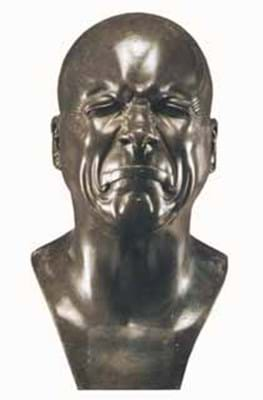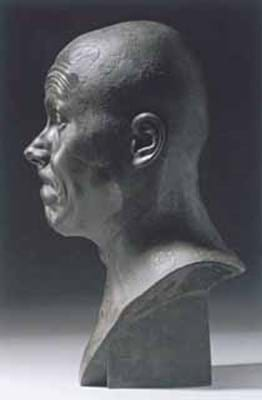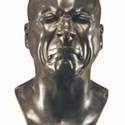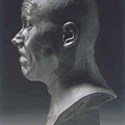Born into a family of distinguished German sculptors, Messerschmidt had a successful early career as a neoclassical portraitist in Vienna, where, like Mozart, he worked for the Emperor Joseph II. In 1769 he became Professor of the Vienna Academy, but five years later he was forced to resign owing to 'mental instability'. His final years were spent as a recluse at Pressburg (now Bratislava) working on a series of uncommissioned self-portrait heads that recorded the facial grimaces with which he attempted to confront and gain mastery over the 'spirits' that tormented him.
The project was understandably regarded as extremely eccentric, if not downright mad by many contemporaries, but these attempts to gain physical mastery over internal psychological states also reflected then-fashionable ideas of animal magnetism developed by Messershmidt's friend Friedrich Anton Mesmer.
Sixty-nine of these unique life-size 'character heads' were found in Messerschmidt's studio at his death. Forty-three of them have survived, the largest portion - 16 - now being in the Österreichische Galerie in the Lower Belvedere, Vienna, with most of the other examples being in European institutions.
The lead bust of the so-called Ill Humoured Man, pictured on the front page, together with the Incapable Bassoonist, pictured below right, had originally been owned by the distinguished Viennese playwright Richard Beer-Hofmann (1866-1945).
Following the annexation of Austria by the Nazis in 1938, the character heads were forcibly transferred to the Historisches Museum der Stadt Wien. Recently, descendants of Beer-Hofmann successfuly applied for their restitution and on January 27 they were offered at Sotheby's Age of Enlightenment sale in New York to benefit the family.
Being the first Messerschmidt character heads to have appeared at auction for 20 years, competition for these extraordinary sculptures was predictably intense. The Ill Humoured Man, one of only three heads that features the lead band over the mouth pioneered by Mesmer as a 'magnetic cure', attracted over a dozen serious bidders before falling to the Louvre Museum for $4.3m (£2.4m) against an estimate of $400,000-600,000. This was a record for any 18th century sculpture at auction. The slightly less dramatic companion piece in tin alloy, The Incapable Bassoonist, was bought by the Italian fashion house magnate and Old Master collector Giacomo 'Gimmo' Etro for $2.2m (£1.2m).
A Powerful Man and A Difficult Secret were the last Messerschmidt character heads to have appeared on the market, selling at Sotheby's London in April 1985 for £130,000 and £85,000 apiece.
Louvre bid $4.2m for Messerschmidt ill temper
Franz Xavier Messerschmidt (1736-83) was one of the most extraordinary figures in the history of Western art.








